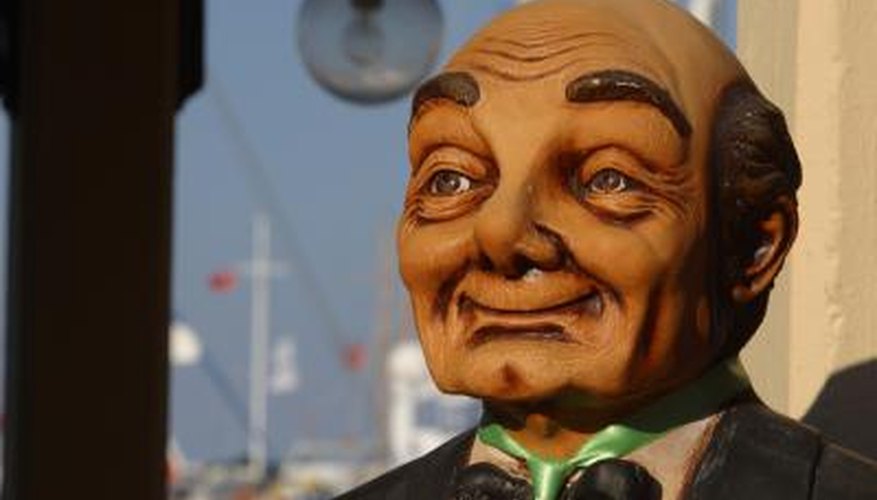The Victorian era of the 19th century was known for numerous things. It is famous as a time of great prosperity and social change in England. It was also arguably the time in which the British Empire reached the height of its economic and political power. Victorians were well known for their strict social and cultural rules of etiquette. This applied particularly to those of the upper and upper middle classes. Victorian servants belonging to such households often had very specific dress codes.
Colours
Servants working in English households during Victorian times had to follow very strict colour codes for their clothing. English maids and servants only rarely wore anything but different shades of muted black, grey or white and sometimes blue. Bright, vibrant colours were generally forbidden as were brilliant or artistic fabric patterns.
Style & Design
All servants' clothing had to be conservative and plain in style. Plainness was required due to the practical purposes of the working day, and also because it was considered unbecoming of a servant or maid to be mistaken for a gentleman or lady of the house. With certain exceptions, women's clothing usually consisted of long dark dresses that extended all the way to the floor and which completely covered the arms and shoulders. Male servant clothing varied based on the type of job they did but was almost always quite simple and included long trousers and a plain shirt.
- All servants' clothing had to be conservative and plain in style.
- Male servant clothing varied based on the type of job they did but was almost always quite simple and included long trousers and a plain shirt.
Butler
The household butler of Victorian times occupied one of the most important positions amongst household servants. It was often his responsibility to manage and direct the other servants. Butlers were required to be clean and wear simple but elegant dark dress clothing which often included white gloves. The clothing was supposed to resemble that of the master but be noticeably less elegant. It was considered bad manners for a butler to wear a jacket and trousers that could lead to him being mistaken for an adult male member of the household.
- The household butler of Victorian times occupied one of the most important positions amongst household servants.
- It was considered bad manners for a butler to wear a jacket and trousers that could lead to him being mistaken for an adult male member of the household.
Maid
Maids of the house took up the chief housekeeping position. Maids were required to wear long dark cotton dresses with little in the way of frills or decoration. Most maids also wore accessories such as a white waist apron and a white head cap. It was strictly frowned upon for a household maid to imitate the lady of the house in any stylistic way, and because of this, as well as a need to make maids easily recognisable at first sight, the dress code was quite rigid.
- Maids of the house took up the chief housekeeping position.
- Maids were required to wear long dark cotton dresses with little in the way of frills or decoration.
Nanny
Wealthy Victorian households could afford a nanny. Nannies were often considered a rank above maids and other servants and were given extra privileges and freedoms. However, they also followed a relatively strict dress code. Nannies during the 19th century usually wore either light blue or white linen dresses that included accessories such as a white frilly apron and a white bonnet. Nannies who left the household for outings were generally required to change into darker coloured cotton dresses that could range in colour from dark blue to dark grey.
- Wealthy Victorian households could afford a nanny.
- Nannies who left the household for outings were generally required to change into darker coloured cotton dresses that could range in colour from dark blue to dark grey.
